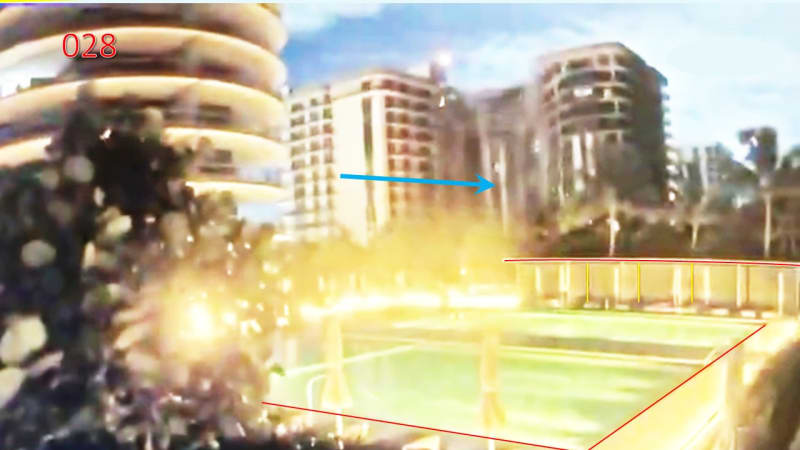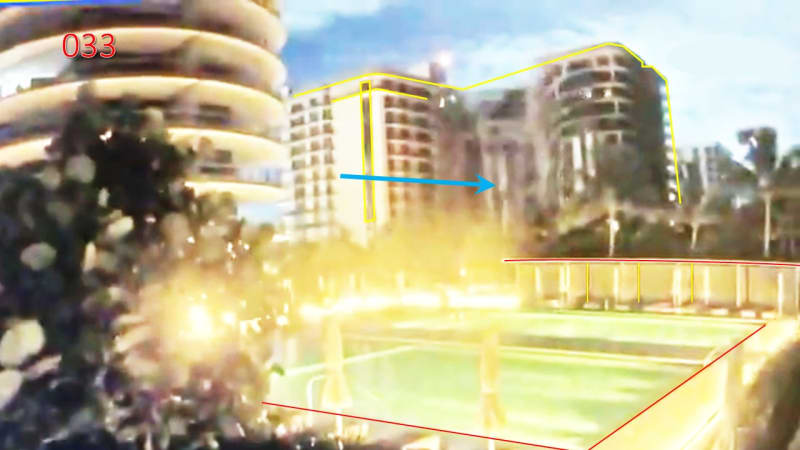The first photo below shows the first frame of the surveillance camera video. On the extreme left-hand corner of the Champlain Tower building we can see that both windows and parapets appear to be dark while the undersides (i.e., ceilings) of the balconies appear to be light. This is because: 1) the camera is located close to the ground, which gives it a view of the undersides of the balconies, and 2) the photo has been taken at night when the only illumination of the Tower is from the adjacent building, which means that we are viewing features by reflected light only. Since more reflection is produced by the undersides of the balconies they appear to be light, while the windows and parapets reflect the light away from the camera causing them to appear to be dark. The relative brightness of these same features appears to be noticeably different under daylight illumination as shown in the second photo below.
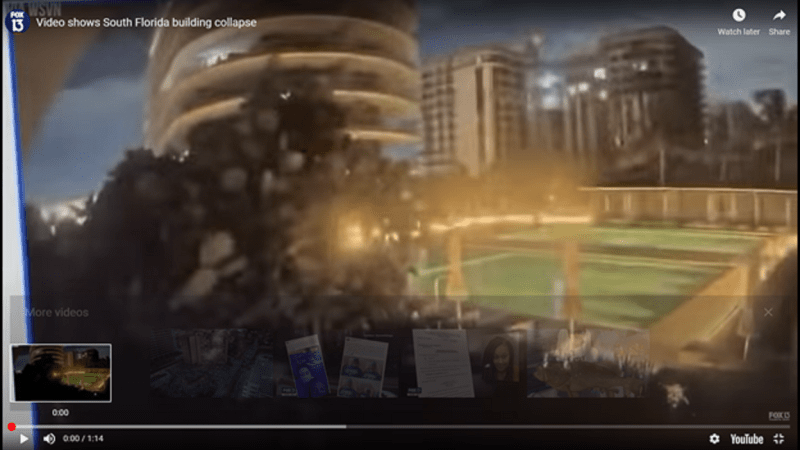
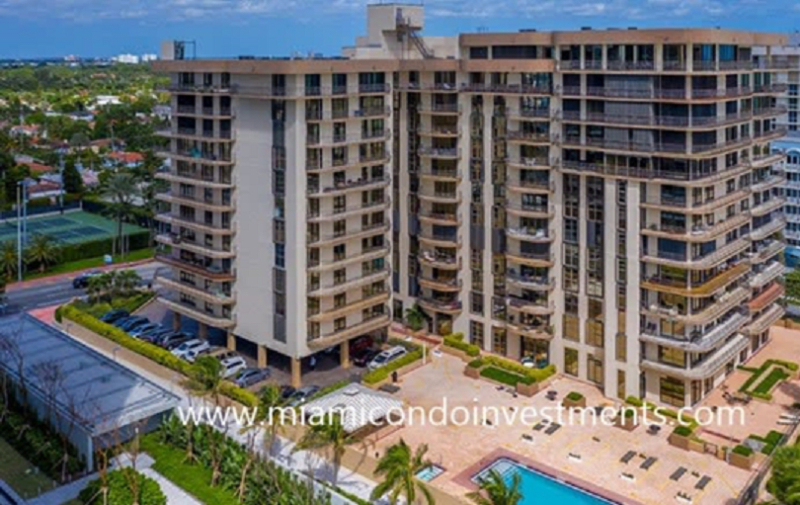
Since both windows and parapets appear to be dark while the bottoms of balconies appear to be light, there should be the following layers on top of each other over the right middle section of the building (from bottom to top):
1) 12th floor window (dark)
2) 12th floor balcony ceiling (light)
3) 12th floor parapet (dark),
4) PH windows (dark),
5) PH balcony ceiling (light), and
6) PH parapet (dark).
Note that the PH windows in this section of the building are obscured by the 12th floor parapet, which should make them appear to be half the height of the PH windows in the right corner part of the building. But the 12th floor parapet also appears to be dark to the eye, so the PH windows in this section of the building actually appear in the photo to be the same size as the PH windows in the corner of the building.
Over the left middle section, above the partially lighted 12th floor, the following layers should be seen (from bottom to top):
1) 12th floor window (lighted)
2) 12th floor balcony ceiling (light)
2) 12th floor parapet (dark).
Note that the light 12th floor balcony ceiling merges into the lighted 12th floor window, making the lighted 12th floor window in the photo appear to be taller than normal.
If we now look at the first frame of the best imagery we can find of the CCTV surveillance video, and not merely the blurred image shown above, what we actually see over the middle right section is this (from bottom to top):
1) 12th floor window (dark)
2) 12th floor balcony eiling (light)
3) 12th floor parapet (dark),
4) PH windows (dark),
5) PH balcony ceiling (light) - but thinner on the left than on the right
6) No dark layer above the light layer.
This implies to me that the entire PH parapet over the right middle section of the building is missing, along with part of PH balcony on the left-hand side of this right middle section.
The simulation by
rodface appears to be quite realistic, and he should be congratulated for his effort. But I would recommend that he change the brightness levels of the balcony ceilings and parapets to better simulate viewing them in reflected light than in daylight. This should then bring his simulation even closer to the CCTV video.

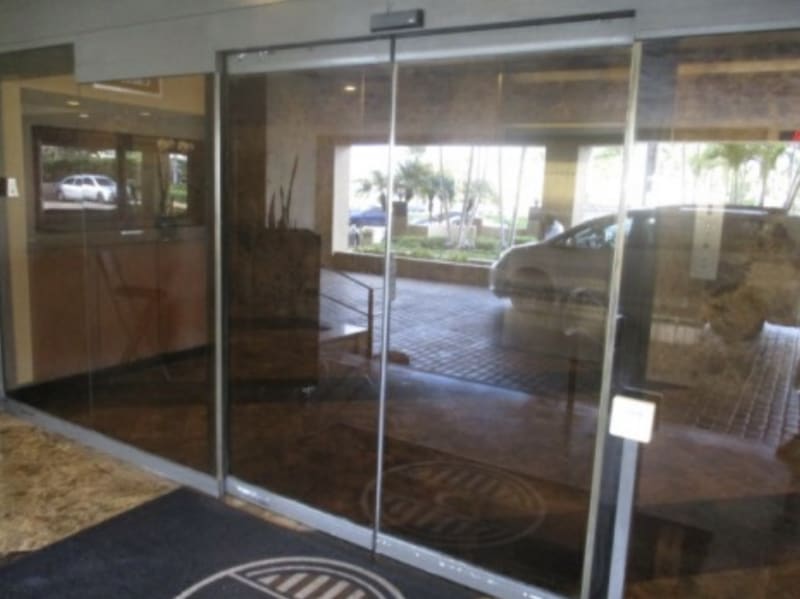
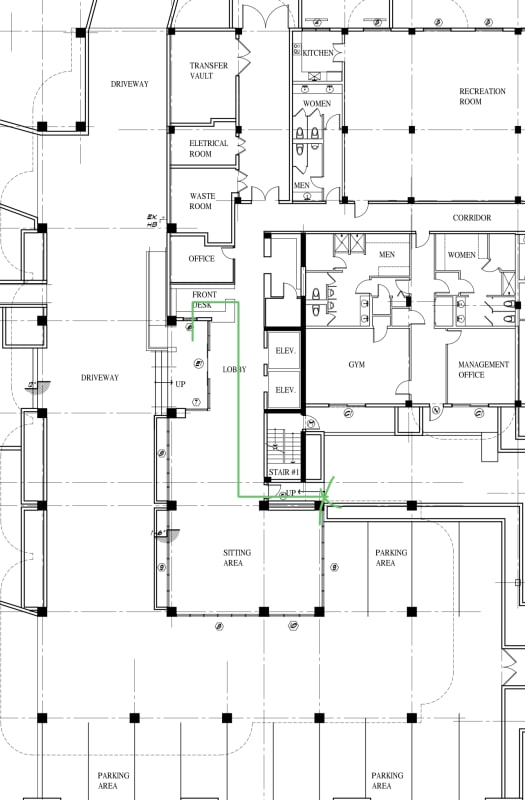
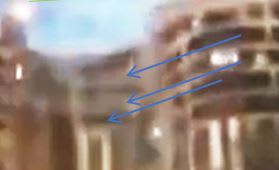


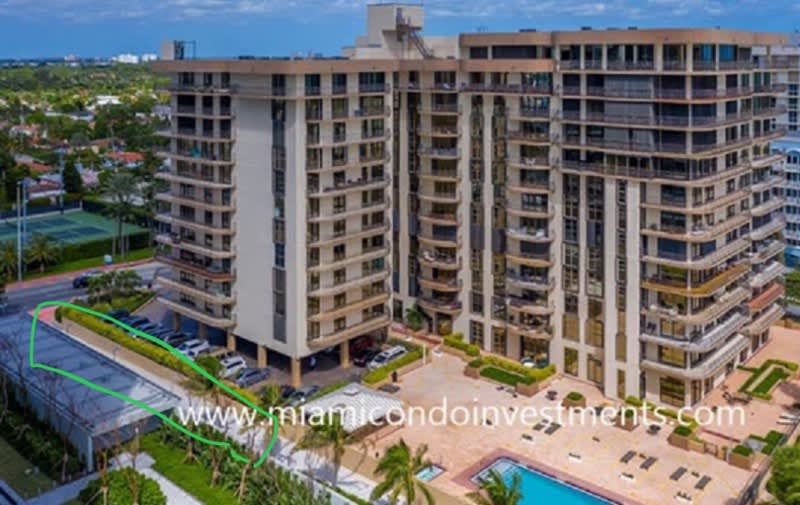
![[neutral] [neutral] [neutral]](/data/assets/smilies/neutral.gif)
![[pipe] [pipe] [pipe]](/data/assets/smilies/pipe.gif)
